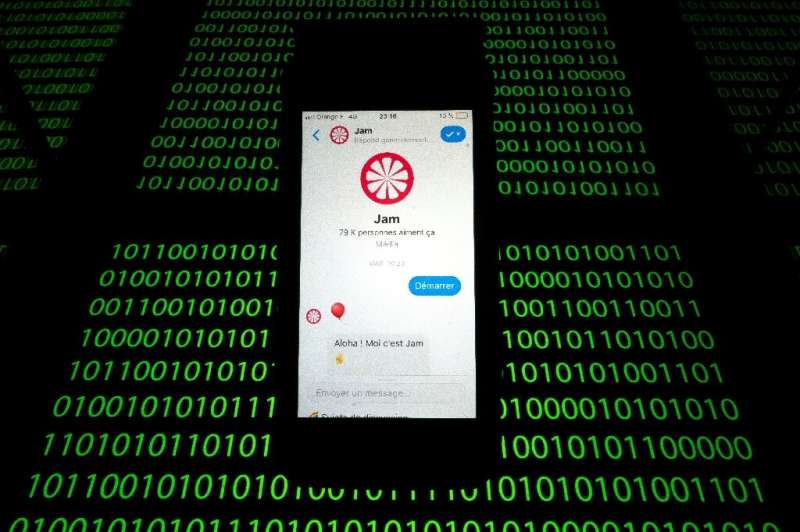I, Chatbot: Getting your news from a talkative automaton

"Do you ever lie to your friends?," Jam asks, popping up in a private message box at the bottom of your screen.
If it seems like a personal question, don't worry—Jam isn't a person, but a chatbot, eager for a bubbly conversation about the news, environment, pop culture and more.
This particular cryptic query leads to Jam telling the story of Romain Gary, a French author who deceived the literary world by writing under a pseudonym.
Jam is one of a new generation of sophisticated chatbots that mimic how real people write in messages and on social media to inform their readers, rather than the traditional dry question-and-answer format.
The French "chatbot media" startup launched three years ago and now has exchanges with 150,000 people every day, most of them young.
Jam communicates via Facebook Messenger and adopts a talkative, casual tone, like a friend telling an anecdote, peppering its banter with plenty of smiley-face emojis, pop-culture gifs and links to viral content.
It chats about the news—particularly click-friendly, shareable stories—or asks about broad subjects, such as your favourite band.
Once you settle on a subject, it offers up information—for example if you're discussing a movie it will link to the trailer.
You can type in responses, but it works best if you simply click on one of several possible automatic answers, which of course include your own appropriately cool emojis.

"Given the possibilities of this technology, the 'bot' must lead the conversation, not the other way around, otherwise it gets limited very quickly," says Jam co-founder Marjolaine Grondin.
Old-school media gets chatty
She is hoping to find a successful business model in news as traditional media outlets struggle with the transition to online, with internet giants siphoning off advertising revenue.
Chatbots have come a long away since embarrassing blunders committed by Tay, a Microsoft chatbot launched in 2016 and quickly grounded after being gamed by some internet users to post racist and misogynous tweets and to praise Adolf Hitler.
Jam has been turning a profit since September, carrying out surveys for brands keen to access the anonymous data of its young database.
Old-school news organisations, meanwhile, are also experimenting with chatbots as a different way to connect with and inform their audiences.
Grant Heinrich, the bot development producer for BBC News Labs, said they recently used a chatbot to give a five-day crash course covering Brexit.
"We had a high completion rate with a very small amount to do each day, it didn't waste your time, didn't try to be super cute," he said.
"We've seen markedly better results for bots that ask the audience their opinion rather than getting the audience to ask questions," he said, giving the example of a question that asked whether the reader thought 15, 20 or 30 percent of people are alcoholic.

He added that readers who accessed the BBC's daily newsletter via the chatbot clicked on links about 12 times more than those who received it by email.
'I wanted the bot to be proud of me'
Emily Withrow, the director of the bot studio at the business news website Quartz, says that the main mistake many media organisations make is thinking of chatbots as a way to attract a new audience to their existing website, rather than as "its own medium".
"It requires its own style of writing, so we have a dedicated team of writers and editors who produce this content just for our bot and app every day, we're not taking news articles and putting it in the bot, (or vice and versa)," she says.
"What we would like to do is use machine learning to get smarter about patterns and content that we don't even necessarily know about and to better deliver content to users without them having to put in a lot of effort."
Withrow says Quartz has stopped experimenting with Amazon's digital assistant Alexa because people didn't want to listen to robotic voices—it seems, for the moment at least, that it's easier to communicate in a believably human manner via text.
She noted that users of chatbots appeared "willing to open themselves to technology, to form a relationship and feelings about something that they know is not human."
"People say 'I know it's silly, I know it's not actually a person, but I wanted the bot to feel proud of me, I'm really looking forward to talking to it'."
© 2019 AFP





















